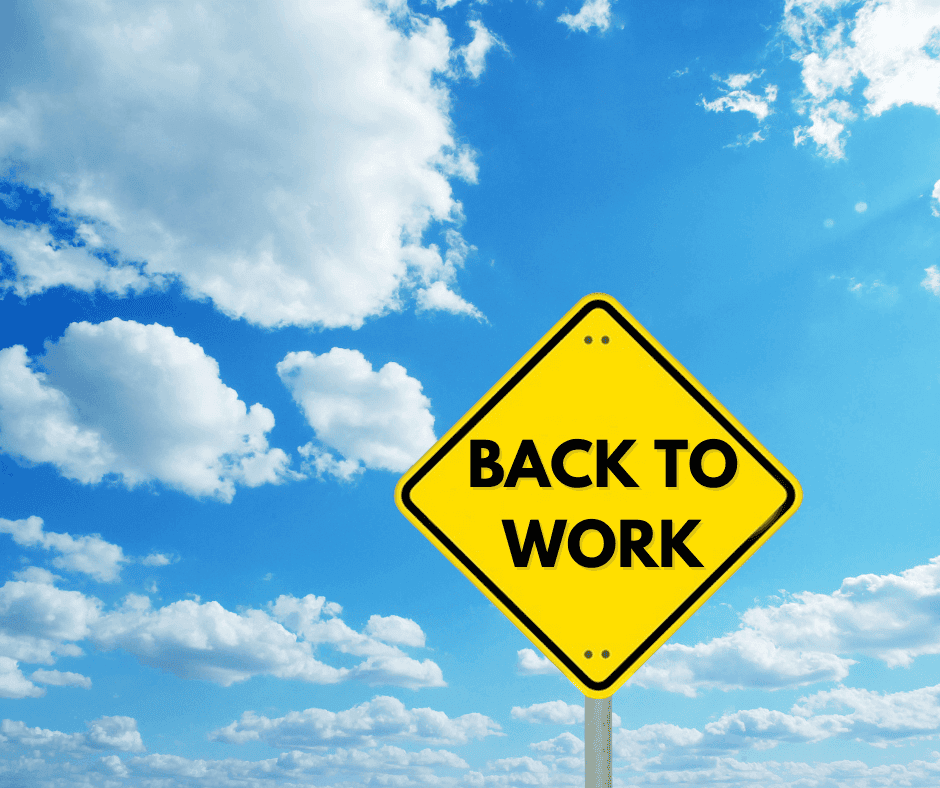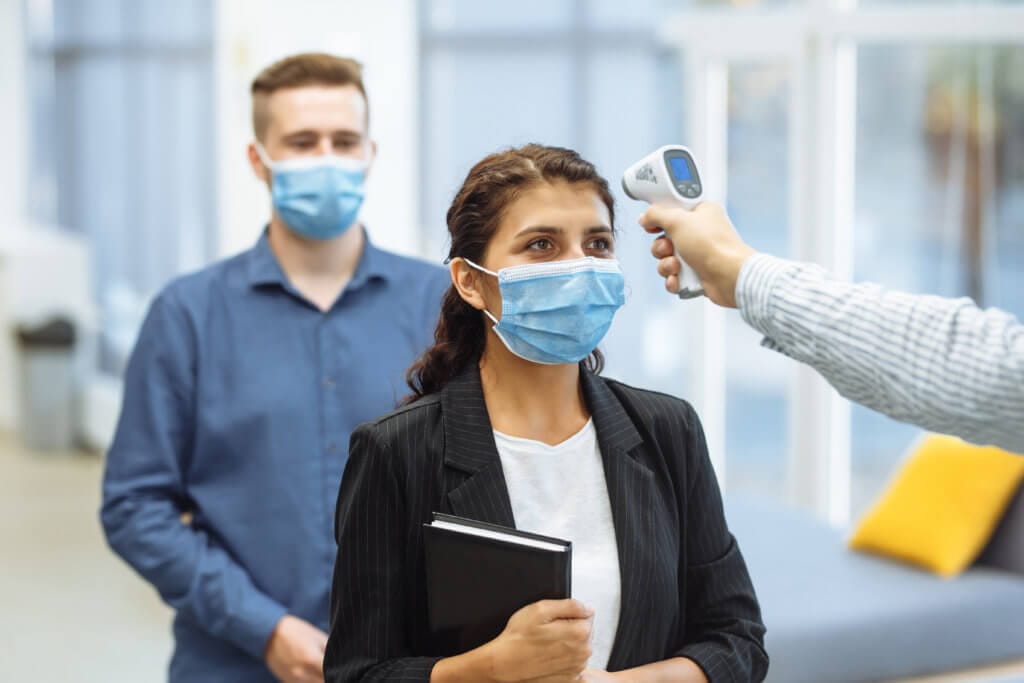
Texans lead Return to the Office, but It’s Complicated
Metropolitan areas in Texas lead the nation with the return to office trend. According to security company Kastle, which has been publishing a weekly “Back to Work Barometer,” office buildings in Austin, Dallas, and Houston are more than 33-37% occupied, compared to around 12% for buildings in cities like New York and San Francisco. The national average stands at about 24% and will likely continue to fluctuate. Overall occupancy dropped to less than 12% last April at the start of the pandemic.
When will the majority of Texans get back to the office? Perhaps sooner than you think.
Since the pandemic began in March, many office workers have worked remotely, from a home office or converted home workspace. Many larger companies have not been in a hurry to bring their workers back, citing health uncertainties and concerns about opening too soon. For instance, many Silicon Valley companies, which were the first to send their workers home, have pushed plans to return to the office well into 2021. Companies like Google, Uber, Slack, Airbnb, and Microsoft have said that they are not going to bring anyone back until the middle of 2021.
Since the beginning of the pandemic, the situation has been understandably complicated and murky. With vaccines now being distributed, albeit, in limited quantities, it provides a sign of hope. Before this news, about 39% of companies said they planned to reopen by the first quarter of 2021. Note that about 13% of companies remained open throughout the pandemic.
Corporations Return to the Office
Many companies are surviving under COVID restrictions, while having employees dispersed and working from home. This is counter-balanced by executives who feel that a remote workforce is less productive, and collaboration is inhibited. “Zoom fatigue” is a real issue that many businesses are confronting.
Specifically, traditional office buildings face a unique scenario. Returning to large office spaces, controlled by central heating and air conditioning systems, remains a cause of concern. Businesses with a cubicle culture or located in high-density office towers have a different equation than a local ice cream shop or takeout restaurant. White-collar businesses generally don’t have the option to serve customers outside or “at the curb” as a restaurant or smoothie shop.
However, a 2021 survey by the Conference Board found that compared to those in other countries, U.S. CEOs have placed a greater priority on a return to the office. Though the rollout of vaccines is great news, many U.S. company executives still don’t know when the majority of Americans will receive them, according to other reports. Despite uncertainty, most companies have been implementing or staggering the return to the office by securing personal protective equipment (PPE), preparing workspaces, and drafting social distancing rules.

What are we going to see now that we are coming back to the office?
According to a Conference Board survey from last fall, companies have added safety equipment, barriers, temperature checks, contactless entry devices, additional sanitation devices, and social distancing guidelines. Most businesses have prepared their workplace with deep cleaning and disinfection procedures.
The reality is that different types of businesses will have different timelines and procedures as employees return.
Once businesses are ready to return to the office, what will this look like?
The Occupational Safety and Health Administration (OSHA) recently issued its guidance on returning to work. Note that the agency referred to this as guidance, not regulations. OSHA has laid out three phases of reopening.
In the first phase, which we have largely moved through, suggests companies should make remote work available to employees. Employees who are returning to the workplace should be limited in number, and companies should offer appropriate accommodations for workers who might be at risk due to age or underlying health conditions. OSHA also recommends restricting non-essential business travel in phase one.
Now, in phase two, more businesses are open but the agency also recommends that companies continue to make telecommuting and telework options available. While allowing non-essential business travel, OSHA still recommends limitations on the number of people in the office and implementation of social distancing guidelines.
Phase three is essentially a return to the “old normal” with unrestricted staffing at all sites.
Guidelines to safely return to the office
OSHA has created several guiding principles for reopening and returning to work.
1. Hazard assessment. Every business should assess job tasks to understand the risks for different job categories as well as potential risks for customers, visitors, and members of the public.
2. Hygiene. Companies must implement proper practices for cleaning and disinfecting workplaces. Businesses must provide hand sanitizer with at least 60% alcohol and employees should be encouraged to frequently use hand sanitizer when they can’t wash their hands. Companies must also identify high touch surface areas for additional cleaning and also identify high traffic areas that require additional disinfecting and cleaning.
3. Social distancing. Companies will need to implement social distancing practices, much like many of us have been doing during the past nine months. Companies need to ensure that workers stay six feet apart as a general rule and limit occupancy so that social distancing recommendations can be accommodated. This might include adding markers on the floor so that employees and customers can stay six feet apart while working, interacting with customers, using restrooms, or clocking-in and clocking-out. Companies should have signage in place that reminds workers about social distancing, and also have directional signs to minimize crowded workspaces.
4. Promote physical separation. Companies must also look at how a building and scheduling can be modified to promote greater safety. Setting up physical barriers, staggering shifts and decreasing capacity should all be considered. Organizations should look to replacing in-person meetings with video conferencing, limit break room capacity, and enforce elevator capacity. This also includes policies for when face coverings, masks, and other PPE are required throughout a building.
5. Workplace flexibility. In general, businesses need to be prepared in case something happens out of their control, such as an employee testing positive or a large group forced to quarantine. Plans need to put in place to communicate within the workplace.
As to when all businesses will be reopened and things will be more like the “old normal,” that’s a great question. Anthony Fauci, director of the National Institute of Allergy and Infectious Diseases, recently said that if 75 percent to 80 percent of Americans are vaccinated by the second quarter of 2021, then the U.S. could reach herd immunity a few months later. With that threshold met, we could reach “normality” by the end of the year.
In the meantime, Texas is taking steps in the right direction. Governor Greg Abbott announced the Texas Capitol reopening in January, even though many state capitols, as well as the U.S. Capitol, remained closed.
Employee Health
First, let’s just talk about face-to-face communication. This contributes to physical, cognitive, and emotional well-being. And we have also learned that a lack of in-person communication is bad for mental health and physical wellness. A study by the Society for Human Resource Management (SHRM) found that many people have struggled to adjust to remote work, and find it, depressing. Employees have said that they get tired more quickly and that they miss face-to-face interaction. Seemingly simple things can make a difference for employees. For example, workers tend to move around, taking coffee breaks, stretch their legs, or have a water cooler moment. These activities contribute to better mental and physical health.

Innovation
When it comes to innovation, most experts agree that great ideas are almost always augmented by bringing like minds together. The value of small, tightly-knit teams is well documented, from Silicon Valley innovators to Navy Seal Teams to even one of the greatest inventors of all time, Thomas Edison. People working face-to-face in teams speed up the interchange of ideas and improve innovation. Having employees in the same office provides a tremendous value when companies are hoping to innovate. It encourages teamwork and ensures that employees have a sense of shared purpose and aligned objectives.
Engagement
Some studies have suggested that people who work from home are less engaged and that they are more likely to have other jobs. In other words, they are more likely to be distracted by what’s happening around their home and by their so-called side hustle. Many employees working from home feel that their productivity has fallen. One study from the American Journal of Political Science said that women are disproportionately impacted by this. Everything from being distracted from work by having to do household chores to taking care of children or dealing with a leaky faucet impedes productivity.
Morale
Another recent SHRM study found that a large percentage of companies have been struggling with employee morale during the pandemic. It is a very stressful time, so this can’t be seen as a problem with a simple solution, but returning to the office means a return of a sense of esprit de corps. It also means a return of face-to-face interaction, more bonding and laughter, and ultimately more motivation and greater enthusiasm. While some of the issues related to working remotely may not hamper morale, we know that being in the office has the potential to dramatically improve it. Improving morale among remote workers is a larger challenge.
Management by “Walking Around”
Many executives derive major benefits from having in-person and regular interaction with their employees. “Management by walking around,” enables bosses to check-in with employees about work, catch-up on personal matters, and have a better sense of their physical and mental well-being. The benefit of being able to quickly be in front of employees and exchange ideas is lost in the remote work environment.
Work-Life Balance
Remote work can be detrimental to work-life balance, as the lines between when work starts and ends can quickly get blurred. Many employees report that it is harder to focus without the traditional breaks between commuting to work, punching the clock, and leaving at the end of the day. Some face challenges to disengaging when they work from home, and this too can add stress and impede productivity. The option to “leave” your job, return home, spend time with your family, and have a restful evening away from the office can be compromised by work from home vs. work from office. Returning to the office helps redraw the lines that lead to a better work-life balance.

Optimism for a full office return
Understanding when offices will fully reopen, like Covid-19 itself, remains complicated – but there’s reason for optimism. Reviewing the Kastle “Back to Work Barometer,” Texas continues to stand out, as the three highest occupancy cities within the 10-city average are all located in Texas. The expectation is that more companies will start to bring employees back to office buildings in the first and second quarter of 2021. As the vaccinations rise, more Texans will be back in the office.
Learn more about how your team can safely return to the office.
